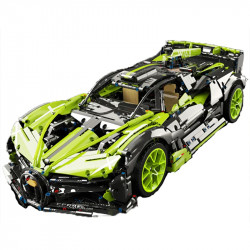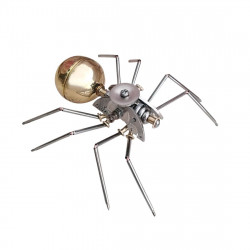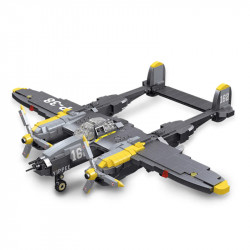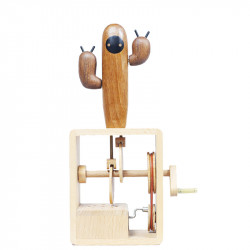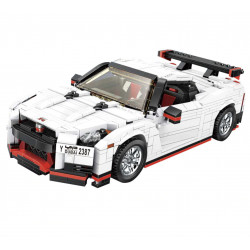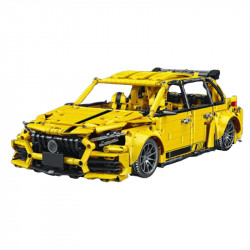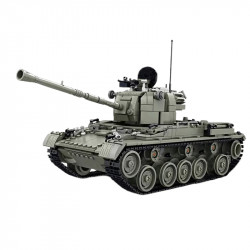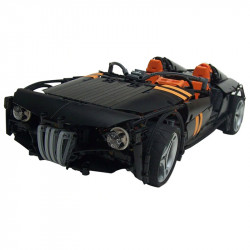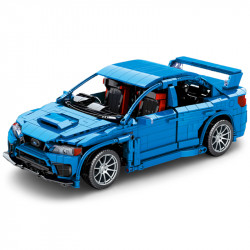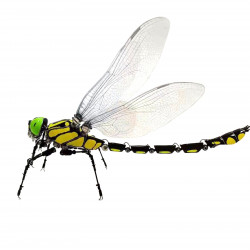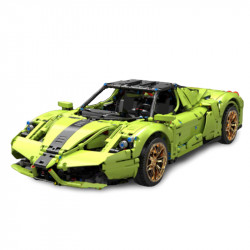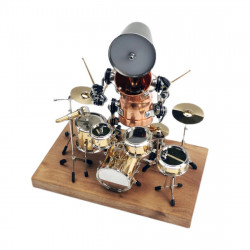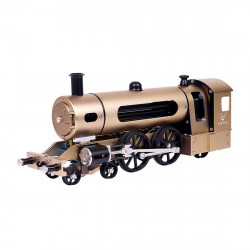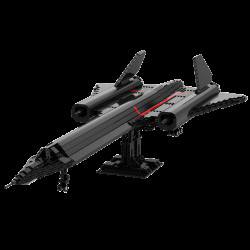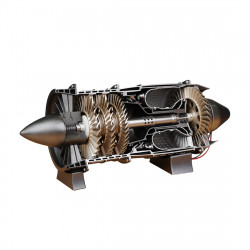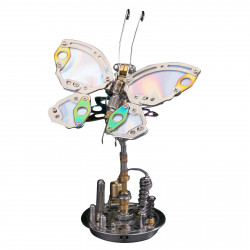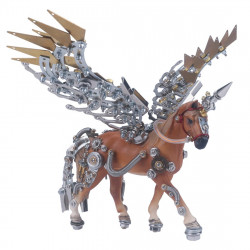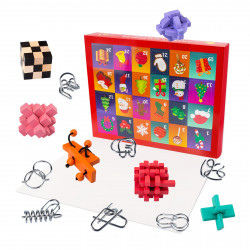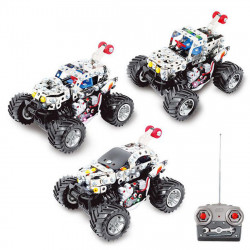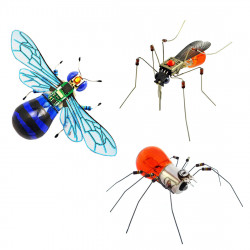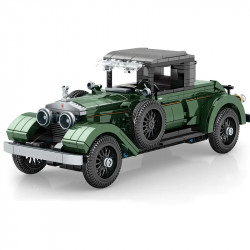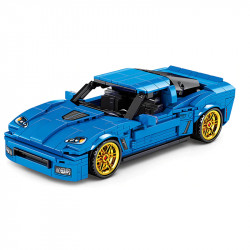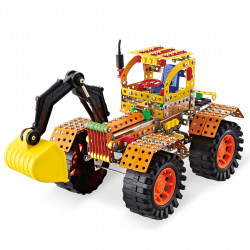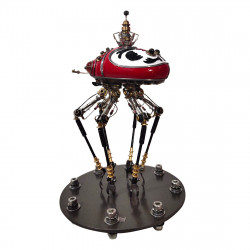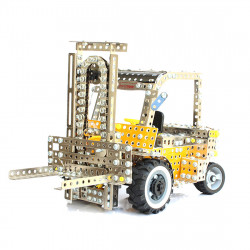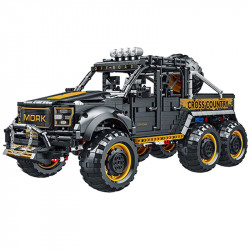DIY Metal Earth Display Shelf

DIY Metal Earth Display Shelf
Therefore, I will occasionally—certainly not every Thursday—do a Throwback Thursday article in which I revisit an old build or concept from before I began this site. I'll likely use Instagram for the images and other information, but I'll be able to add a lot of detail to the writing.
This first throwback is unquestionably from Instagram, as the image above shows. I went a bit too far to prevent visitors from simply scrolling past the first picture, assuming it was a picture of my models. However, I'm retaining the picture in this post because it still works well as an eye-catcher.
Why DIY?
I made my shelf, but why? And for what reason did I write a post explaining how to make one? To solve the first requirement, I wanted a device that was both lightweight and capable of displaying a large number of models. Well, since people kept asking about the second question.
I was running out of space to display my many models, which is a problem that many builders encounter. Because my home is unsafe due to the presence of children and animals, I also show my models at work. I, therefore, concluded that I needed to furnish my cubicle with a shelf. Unfortunately, the cubicle's manufacturer chose to install the mounting slots on the walls at non-standard intervals. I was forced to either create my shelf mounts or spend a lot of money. I decided on the latter, making my supports that fit into the slots using 3D printing.
I needed the shelf to be solid but lightweight because I knew 3D-printed items weren't decisive. In this manner, I wouldn't be significantly increasing the models' already heavy burden. I didn't like the prefabricated acrylic spice rack shelves that I had initially contemplated. I, therefore, had the bright notion to use Styrofoam sheets instead. Or perhaps the thought came to me. In any case, that makes it extremely light, which is fantastic. Sadly, it turns out that there is insufficient light. However, that is a tale for a different Thursday.
In any case, I occasionally posted pictures of my models on these shelves (yes, I made more than one), and occasionally, someone would inquire about them. I then decided to "document" and publish the process the next time I produced one, bringing the total to three. Regretfully, Instagram's 2000-character caption limit made it rather difficult, but I can now grow better at it.
Supplies
Depending on how many tiers you want on your shelf, you can use two or three 2 x 12 x 48-inch sheets of Smoothfoam or Craft Foam for everyone who uses a logical measurement system that is 5x30x120 cm. The longest measurement can also be changed to suit your requirements.
- Black Latex Paint—you don't need a lot, but you definitely do not want to use spray paint, as the accelerants in spray paint melt Styrofoam.
- X-Acto Knife, Hobby Knife or Box Cutter – basically something sharp and precise.
- Rubber Cement – you'll need a liberal amount of this.
- 2 Shelf Brackets, 8″ (optional) – this is for if you want to mount it directly to a vertical surface. You can also place it on an existing horizontal surface. (20cm for logical measurement)
- A Ruler – or measuring tape and a straight edge of some sort.
- Marker – I used a Sharpie.
- Paint Brush – because paint.
- Vacuum / Broom – because of mess.
Step 1: Measure Twice
You cut one of the foam sheets into two pieces, then stack them on the third piece, which is how I constructed this shelf. You can, however, omit the second sheet and stack the two pieces if you prefer a shelf with only two levels and a lesser depth. I trimmed out a third of the sheet to create a 1/3-size section, a 2/3-size section, and a complete sheet, which allowed me to make an evenly tier shelf.
Measuring and marking the line I intend to cut is the first step. I used a ruler to measure and mark out ticks at regular intervals along the length of the foam sheet, 4 inches (10 cm) from the edge. It should come as no surprise that the ticks should be 8 inches (20 cm) from the other side. I then connected the ticks with a line drawn with a long, straight edge. I connected the two lines with lines on either end after doing the same on the reverse.
Step 2: Cut Once
Unexpected! Cutting the sheet in half is the next step! Alright, enough about the silliness. I discovered that the easiest way to begin was to make a shallow, precise cut across the entire sheet, including the ends. I then went back over the line I had previously cut and used a few more knife strokes to deepen it. Unfortunately, my hobby knife was too short to cut all the way through because it was only 2 inches thick. I attempted to use a box cutter with an extendable blade, but when it is stretched far enough, the blade becomes too flexible. Thus, you go to the following stage.
Step 3: Divide and Subdue
It's time to destroy that sheet of foam! The sheet snapped apart as I gently bent it along the line I cut. Unfortunately, this left a somewhat rugged area with scattered small mountains and valleys where the break happened. I tried to change this because I didn't like it so much; at least I tried to change the mountains, not the valleys. I ended up just using the ruler to "scrape" the mountains off, foam bead by foam bead, after initially attempting to cut them out with the hobby knife. The before and after are seen above; I wish I had planned that picture better because the shadow on the cleaned-up one is so distracting.
Step 4: Clean Up Time
Alright, taking the step to tidy up is pointless. However, it's important to note that the final step makes a large mess. The fact that all of the little foam beads are highly static and stick to everything doesn't help either. Taking a pause and cleaning up everything now is a brilliant idea because that could cause serious issues in later steps. Additionally, don't forget to rub your hands over the surfaces you've cleaned to remove any last bits of loose foam.
Step 5: Registration Time
Therefore, until I heard the word "registration marks" used on several YouTube DIY/Build channels, I didn't really know what it was. However, I immediately adored the idea. When you are building something, you need to keep separating the pieces you are working on, and registration markings are lines or dots that help you keep everything lined up. I applied two registration mark techniques in this instance.
I started by stacking the foam sheet pieces onto the tiered shelf and then took some time to figure out how I wanted the back edge to line up (it wouldn't be perfect). I then drew a line down the two "inside" corners where the tiers joined, keeping the stack securely together. I could maintain the front-to-back alignment with the aid of this registration mark. Then, at different places throughout the shelf's length, I added a few lines that were perpendicular to those lines. By that, I mean a line that begins on one tier's vertical face, descends and emerges somewhat on the tier below its it's horizontal surface.
After identifying the top and bottom of each tier, I carefully unstacked the tiers. Additionally, I marked as "glue this section" the areas where one tier had been flush with another. If one of the sheets is upside down, the alignment may not work, so you'll probably want to apply the first set of labels, though the second set is excessive.
Step 6: Getting Sticky
You get to apply the glue next. I advise liberally applying rubber cement to the top of the tier you plan to attach it to and the bottom of one-tier. Don't join them just away, though! In fact, letting the glue air for around 30 seconds will speed up the affixing process.
Step 7: Stick the Landing
Line up the tiers using the registration marks, then press them firmly together. If you are creating a three-tiered shelf, then repeat with the third tier after letting this sit for a few minutes.
Step 8: Put a Coat On
Lastly, I painted the entire thing with two coats of black latex paint. Since my collection of models at the time was primarily silver, I felt that black would make the best contrast. However, you can use any colour you desire or even line it with fabric or contact paper.
However, if you decide to paint it, do not use spray paint. Accelerants found in almost all spray paints will melt the Styrofoam, ruining all of your hard work. When painting the shelf, you should also be aware that you will likely need to scrutinize it after the second coat because several small holes and cracks are difficult to spot during painting and are likely invisible until the paint has had time to dry.
Step 9: Mount It
Lastly, you may mount this on a wall using ordinary shelf brackets or set it on a flat surface. If you decide to mount it, I suggest carefully driving some long wood or deck screws into the foam to secure it. You want it to have a tight grip, so there's no need to drill out or anything.
Step 10: Make It Your Own
You don't have to construct it exactly like mine because this is your shelf. Along the way, I've highlighted a few ways you might modify things to suit your unique requirements. However, you can also incorporate features that you think of. After giving it some thought, I decided that using magnetic sheets for the top of each tier would be fantastic because it would help stabilize the models. To provide the models with some lovely illumination, consider installing some LED lights down the front of each tier at an angle toward them. Leave a comment below and let me know if you wind up creating one of these or if you have any fantastic suggestions! I'd like to see what you do using this article as a guide.

